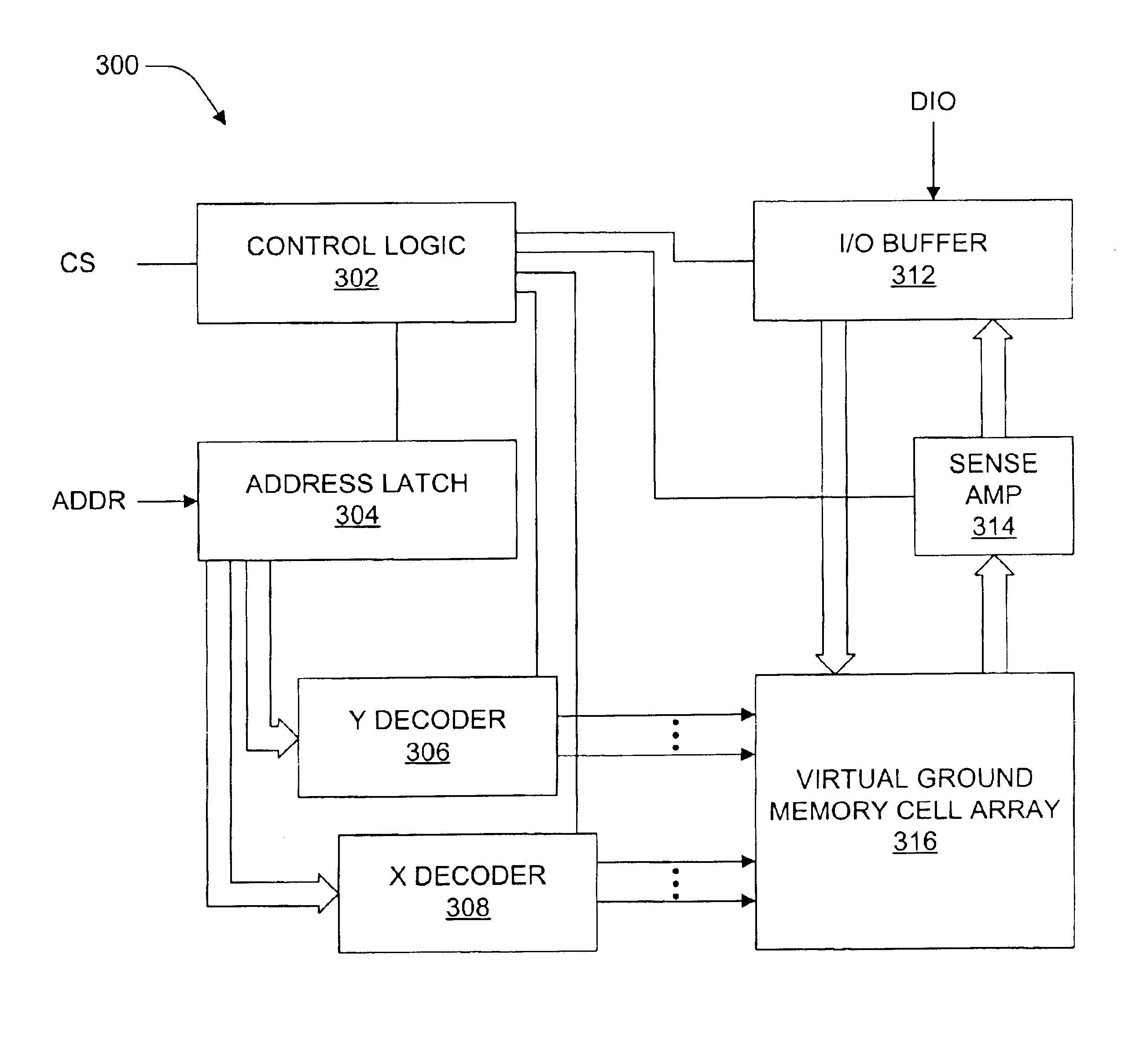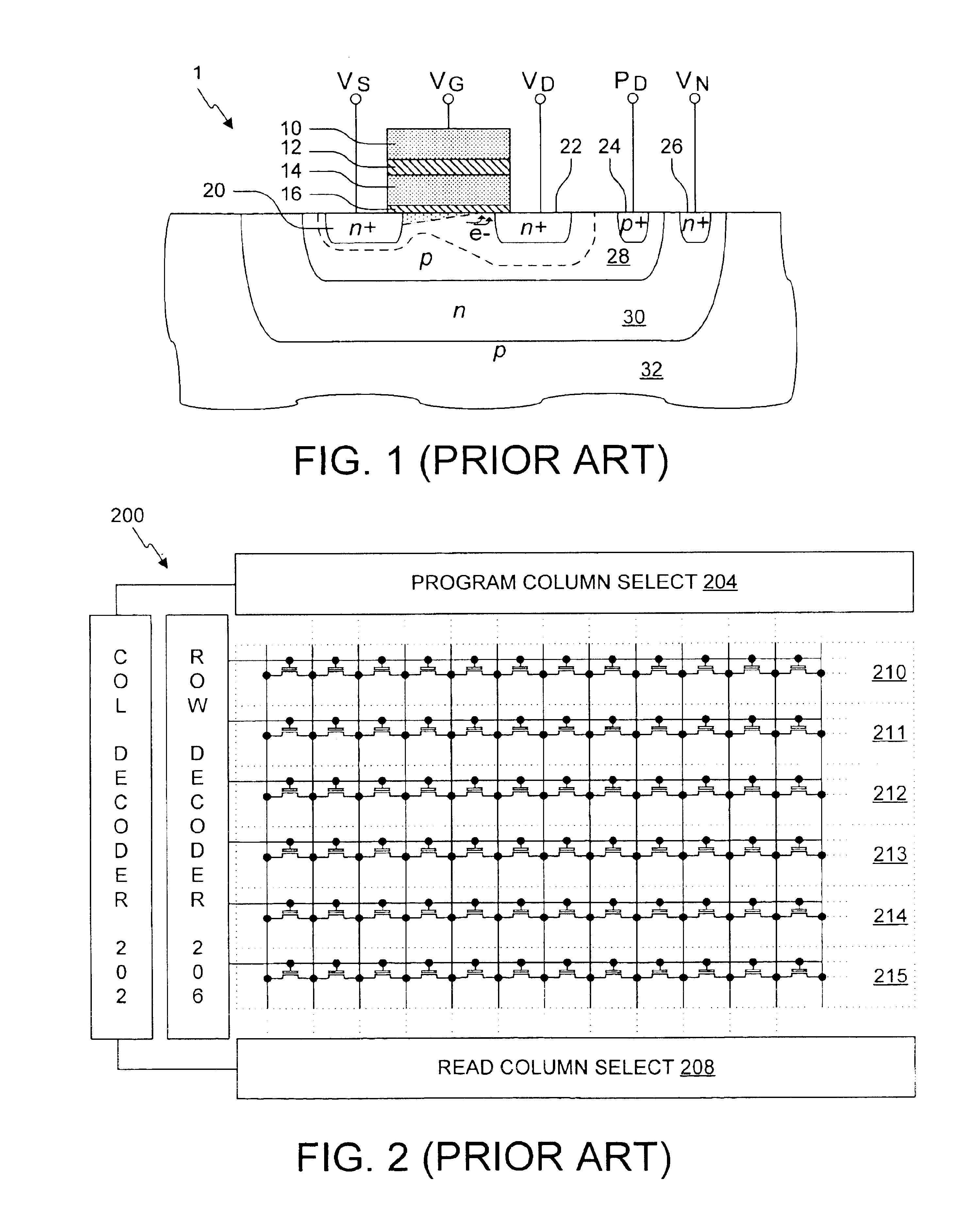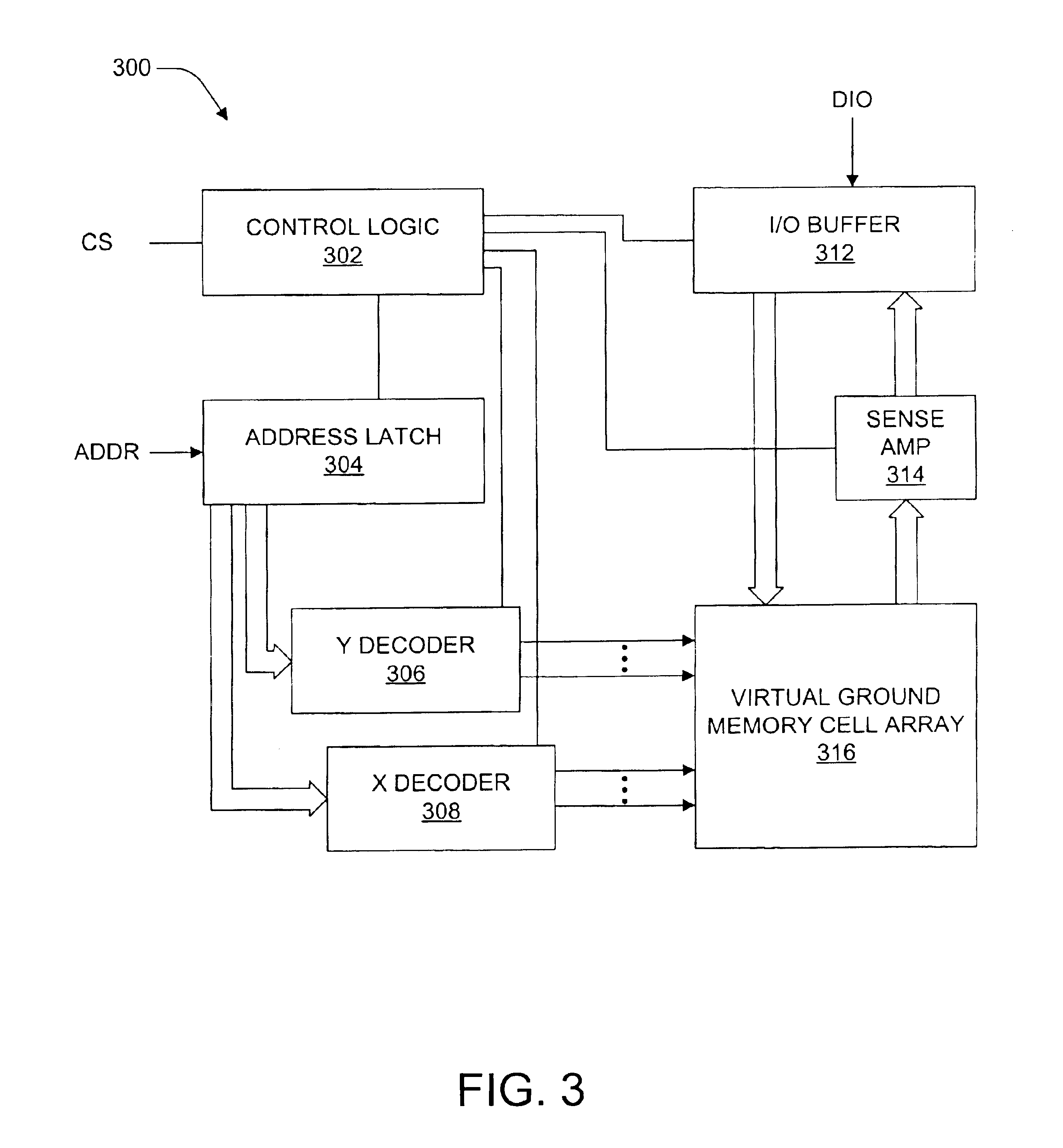Virtual ground nonvolatile semiconductor memory array architecture and integrated circuit structure therefor
a virtual ground and memory array technology, applied in static storage, digital storage, instruments, etc., can solve the problems of difficult simultaneous multiple byte programming and page mode programming, and the decoding circuits of source and drain are extremely complex
- Summary
- Abstract
- Description
- Claims
- Application Information
AI Technical Summary
Benefits of technology
Problems solved by technology
Method used
Image
Examples
Embodiment Construction
In an array of nonvolatile memory cells, the memory cells of each sector are organized into groups of successive cells associated with respective groups of successive column lines, the groups of memory cells preferably being of the same size and being isolated from one another by a suitable isolation structure, illustratively oxide formed by any suitable process such as trench isolation or grown field oxide isolation. Because of cell group isolation, each group of column lines may be decoded by its own relatively small program column select, which preferably is replicated in essentially identical form for all groups of column lines. While each program column select preferably is used to decode one group of column lines, larger program column selects may be used if desired to decode two or more groups of column lines. Read column selects may decode one or more groups of column lines as desired, with the number of column lines decoded by the read column selects being the same as or di...
PUM
 Login to View More
Login to View More Abstract
Description
Claims
Application Information
 Login to View More
Login to View More - R&D
- Intellectual Property
- Life Sciences
- Materials
- Tech Scout
- Unparalleled Data Quality
- Higher Quality Content
- 60% Fewer Hallucinations
Browse by: Latest US Patents, China's latest patents, Technical Efficacy Thesaurus, Application Domain, Technology Topic, Popular Technical Reports.
© 2025 PatSnap. All rights reserved.Legal|Privacy policy|Modern Slavery Act Transparency Statement|Sitemap|About US| Contact US: help@patsnap.com



